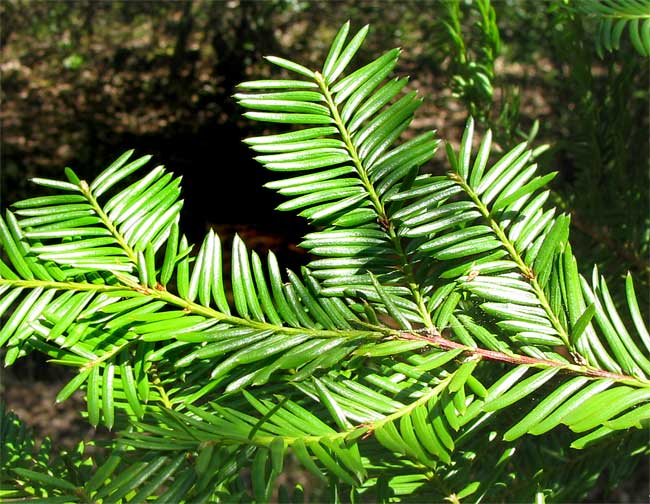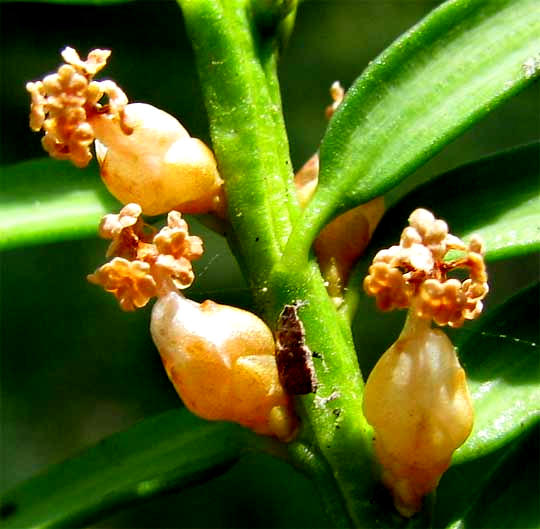Excerpts from Jim Conrad's
Naturalist Newsletter

from the the May 24, 2009 Newsletter, issued from the Siskiyou Mountains west of Grants Pass, Oregon:
YEW FLOWERS
Usually we think of yews as evergreen bushes around suburban houses trimmed into square-cornered forms. Out here the Pacific or Western Yew, TAXUS BREVIFOLIA, is a good-size tree and along a stream in the valley below it's flowering now. Take a look at a branch with its inch-long needles held in a flat plane above.
Yews are gymnosperms so they're not angiosperms, which are known as the flowering plants, yet yews do have clusters of sexual parts traditionally referred to as flowers. You can see male "flowers" or stamen clusters below:

Yews are typically dioecious (separate male and female trees). A "flower" from a female tree, consisting of a single naked ovule subtended by several bracts, is below:

The male "flowers" fall off as soon as their anthers shed their pollen. The female "flowers" will slowly grow until late summer when they'll develop into a greenish seed almost entirely surrounded by a bright red, gelatinous cup, or "aril," you've probably seen on yew shrubs.
In the forest, Pacific Yews are easily distinguished from other evergreen trees by the green sprouts arising from their trunks. This seems to be a good field mark for yew trees in general. Long-time readers will remember the Mexican Yews I profiled. A picture showing a trunk heavy with green sprouts still resides at http://www.backyardnature.net/q/mex-yew.htm.